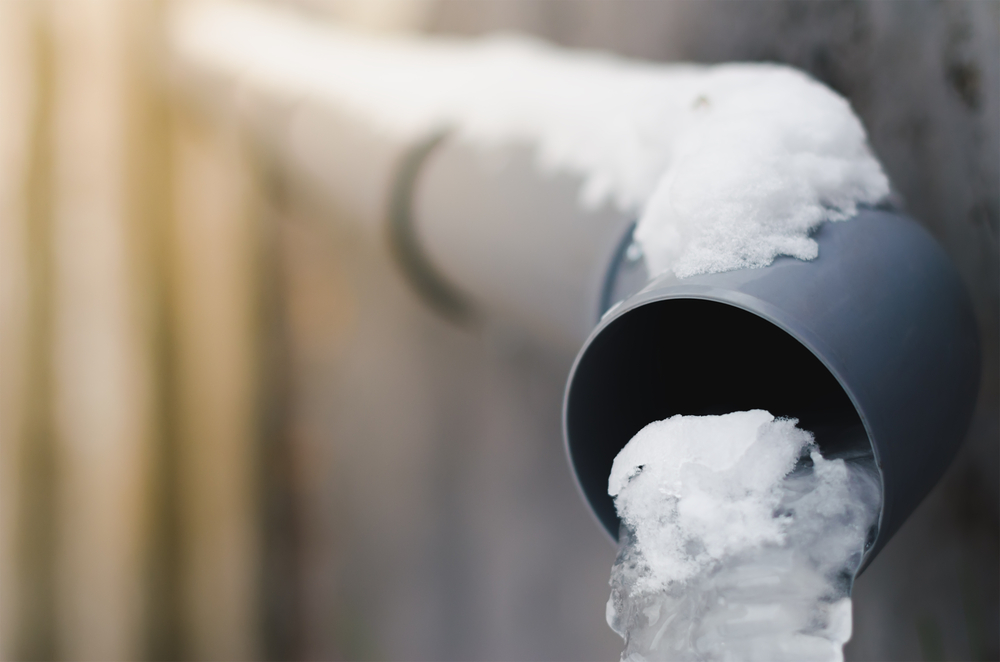Essential Methods for Avoiding Frozen Pipes in Cold Weather
Essential Methods for Avoiding Frozen Pipes in Cold Weather
Blog Article
We've stumbled on this post pertaining to How To Avoid Freezing Pipes below on the net and think it made good sense to write about it with you over here.

Winter can ruin your pipes, especially by freezing pipes. Here's just how to stop it from occurring and what to do if it does.
Introduction
As temperature levels decline, the danger of frozen pipelines increases, possibly causing expensive repairs and water damage. Understanding how to prevent frozen pipelines is vital for homeowners in cold environments.
Avoidance Tips
Protecting prone pipes
Cover pipelines in insulation sleeves or utilize heat tape to shield them from freezing temperature levels. Focus on pipelines in unheated or outside locations of the home.
Home heating methods
Maintain interior rooms effectively heated up, especially areas with pipes. Open cupboard doors to enable warm air to distribute around pipelines under sinks.
Just how to recognize icy pipes
Search for lowered water flow from faucets, unusual odors or sounds from pipelines, and visible frost on exposed pipelines.
Long-Term Solutions
Architectural changes
Think about rerouting pipes far from exterior wall surfaces or unheated areas. Include additional insulation to attic rooms, basements, and crawl spaces.
Updating insulation
Purchase top quality insulation for pipelines, attics, and wall surfaces. Proper insulation aids maintain constant temperature levels and decreases the threat of frozen pipes.
Shielding Outdoor Pipes
Yard hoses and outside taps
Separate and drain garden pipes prior to winter. Set up frost-proof spigots or cover exterior taps with shielded caps.
Understanding Frozen Pipes
What triggers pipes to ice up?
Pipelines ice up when subjected to temperature levels listed below 32 ° F (0 ° C) for expanded durations. As water inside the pipelines ices up, it broadens, putting pressure on the pipe walls and potentially causing them to burst.
Threats and problems
Icy pipelines can result in water system interruptions, building damages, and costly repair work. Ruptured pipelines can flood homes and cause considerable structural damage.
Indicators of Frozen Pipeline
Identifying icy pipes early can stop them from rupturing.
What to Do If Your Pipes Freeze
Immediate activities to take
If you suspect icy pipes, maintain faucets open up to alleviate stress as the ice melts. Make use of a hairdryer or towels taken in hot water to thaw pipelines slowly.
Verdict
Preventing frozen pipelines requires positive measures and fast responses. By comprehending the reasons, signs, and preventive measures, home owners can protect their plumbing during winter.
5 Ways to Prevent Frozen Pipes
Drain Outdoor Faucets and Disconnect Hoses
First, close the shut-off valve that controls the flow of water in the pipe to your outdoor faucet. Then, head outside to disconnect and drain your hose and open the outdoor faucet to allow the water to completely drain out of the line. Turn off the faucet when done. Finally, head back to the shut-off valve and drain the remaining water inside the pipe into a bucket or container. Additionally, if you have a home irrigation system, you should consider hiring an expert to clear the system of water each year.
Insulate Pipes
One of the best and most cost-effective methods for preventing frozen water pipes is to wrap your pipes with insulation. This is especially important for areas in your home that aren’t exposed to heat, such as an attic. We suggest using foam sleeves, which can typically be found at your local hardware store.
Keep Heat Running at 65
Your pipes are located inside your walls, and the temperature there is much colder than the rest of the house. To prevent your pipes from freezing, The Insurance Information Institute suggests that you keep your home heated to at least 65 degrees, even when traveling. You may want to invest in smart devices that can keep an eye on the temperature in your home while you’re away.
Leave Water Dripping
Moving water — even a small trickle — can prevent ice from forming inside your pipes. When freezing temps are imminent, start a drip of water from all faucets that serve exposed pipes. Leaving a few faucets running will also help relieve pressure inside the pipes and help prevent a rupture if the water inside freezes.
Open Cupboard Doors
Warm your kitchen and bathroom pipes by opening cupboards and vanities. You should also leave your interior doors ajar to help warm air circulate evenly throughout your home.

Do you enjoy more info about Prevent Frozen Pipes ? Try leaving feedback directly below. We would be pleased to find out your opinions about this content. We are looking forward that you visit us again soon. Sharing is good. One never knows, you will be helping someone out. I am grateful for being here. Return soon.
Free Estimates Report this page